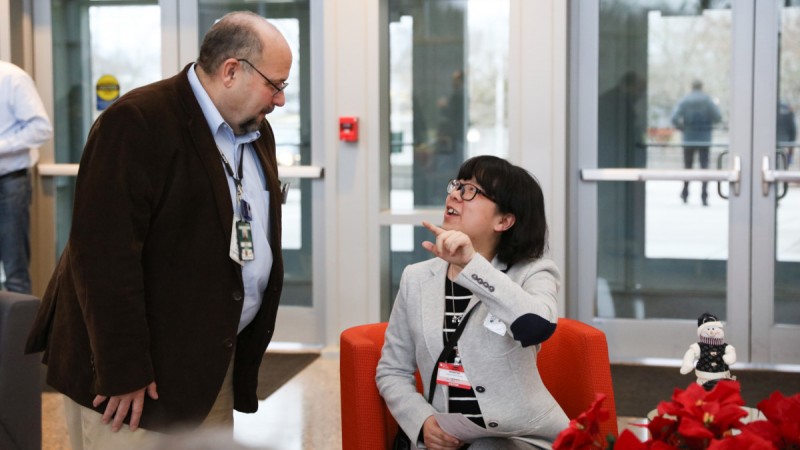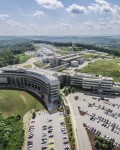"One of the goals of Oak Ridge National Laboratory is to make new scientific discoveries that help drive our nation’s economy. The Second Target Station at the SNS will provide transformative new capabilities for discovering the fundamental properties of materials using neutron scattering. These new capabilities will enable experiments that are not possible today at any existing research facility. Although it’s hard to predict what the research challenges of tomorrow will be, I am confident that the STS will allow researchers to develop new materials that underpin future technologies such as quantum computing, reusable plastics, new energy conversion and energy storage technologies, and new stronger and lighter structural composites. The STS represents a tremendous opportunity to help shape our future prosperity."
—Paul Langan, Associate Laboratory Director, Neutron Sciences Directorate, Oak Ridge National Laboratory
“Imagine being able to study the features of a single tree, while developing a detailed understanding of the entire forest it resides in at the same time. That’s the kind of observational power this new facility will give us.”
—Tom Russell, Professor at the University of Massachusetts-Amherst
“STS will make neutrons even more effective for studying soft matter materials by enabling researchers to probe samples with neutrons of different energy levels simultaneously. It will be a far more efficient process. Experiments that once took half an hour may now take only 30 seconds.”
—Hans Christen, Director of Neutron Scattering Division, Oak Ridge National Laboratory
“It’s a very exciting time for Oak Ridge and the national labs because the Second Target Station is going to produce experiments from a range of science with more sophisticated data and more of it because of its beamline intensity. “
—Tony Hey, Chief Data Scientist, Rutherford Appleton Laboratory, Science and Facilities Technologies Council
“The Second Target Station will open a lot of new directions in different scientific fields. With this workshop, we’re asking what are the main scientific questions we can address.”
—Yang Zhang, Associate Professor, University of Illinois at Urbana-Champaign
“STS could help us study kinetic systems we can’t easily study now.”
—Valeria Lauter, Neutron Scattering Scientist
“I study how materials fail, break, and crack. It’s a dynamic process that can be hard to study with traditional methods. With STS, we could observe material failure in real time with neutron scattering and use that insight to design stronger materials.”
—Md Hossain, University of Denver
“Currently, it can take years to grow a crystal large enough for study with neutron scattering. STS would allow us to get the same amount of information from smaller samples, which would greatly expedite the research process and lead to more publications.”
—Victoria Drago, University of Toledo
“STS will help us understand quantum materials. With STS’s increased flux and other capabilities, we’ll get to study phenomena we can’t currently observe.”
—Laura Green, Chief Scientist at the National Magnetic Field Laboratory and Professor of Physics at Florida State University
“My team works on superconducting materials, which we synthesize in water. It’s an interesting technique for making materials, but we can’t actually monitor the crystal growth and the synthesis. STS would help us watch this process in real time and learn more about creating these materials.”
—Efrain Rodriguez, University of Maryland
“STS will provide us with a continuous range of neutrons, which will be very helpful for developing a comprehensive understanding of our samples’ structure.”
—Barbara Evans, Chemical Sciences Division, Oak Ridge National Laboratory
“We do research on magnetic thin films. STS will give us the brightness we need to study these materials properly and a broad wavelength of neutrons that will tremendously help those measurements.”
—Tim Mewes, University of Alabama
“STS will have twice the flux and a beautiful timescale, both of which will help my team understand things like dark matter.”
—Kate Scholberg, Duke University
Scientists from all disciplines attended the workshop, which was Dec. 9 and 10 at Oak Ridge National Lab’s Spallation Neutron Source. They will help shape the future of the Second Target Station’s suite of neutron instruments, which will offer new and exciting scientific capabilities.—by Gage Taylor
— ORNL science writer Katie Jones contributed to this list of comments.




